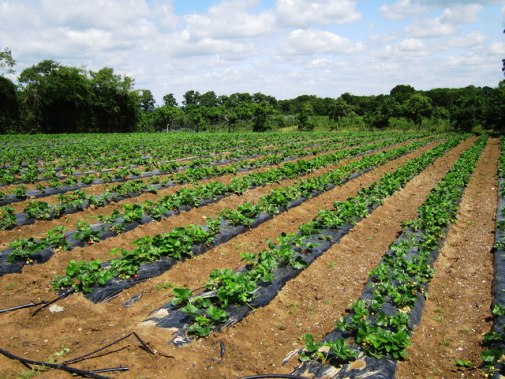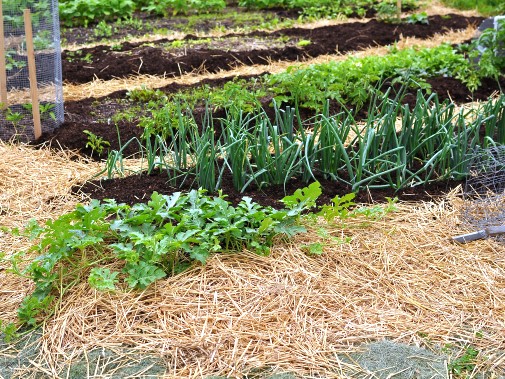
Climate Smart practice – Source: CGIAR
Technological advancement in agriculture has influenced many farmers in the developed world to use mechanized methods to do farming in a simplified manner which is not the case in most developing countries. Apart from barriers such as technical capacity, labor power, and financial matters, the main cause is the weather variations that lead to too much or limited rainfall resulting in droughts and poor productivity. This has created a disappointment among farmers, particularly youth in the agriculture sector, where about 85% of the young people live and depend on farming as the source of income (Mungai C et al., 2018).
It’s potential …
Since Africa depends on agriculture for its gross domestic product (GDP), employment and livelihood, several initiatives are made to ensure improved productivity and sustain the continent’s development. Among the initiatives include the Climate Smart Agriculture (CSA), an approach aiming at improving agricultural productivity and income, adapting and building resilience to climate change, while reducing greenhouse gas (GHG) emissions where possible (FAO, 2018). For the initiative to be successful it must be equitable and inclusive to comply with the synergies while overcoming trade-offs with other Sustainable Development Goals (Jon Hellin and Eleanor Fisher, 2019).The 2015 Paris Agreement and the 2030 Agenda for Sustainable Development aim at addressing climate change helping countries and people achieve sustainable development. Moreover, since 2016 the World Bank (Newell et al., 2019) has supported and analyzed CSA policy implementation in Africa with sets of indicators to ensure enabling environment and institutional frameworks for successfully adoption and achievement of CSA innovations. With these agreements it was noted that youth, women and men from various backgrounds should be given priorities in the planning and implementation of policies and programs by governments, development partners and other stakeholders.
CSA practices for sustainable agriculture
Some of practices and technologies include land use management, pest management, institutional support, farmer’s knowledge support, farming techniques and other agricultural innovations explained below.
Efficient resource management is an important element in the CSA because it ensures environment conservation and proper management of resources. For instance, proper planning and management in the value chain could address the challenge of food loss from production, transportation, processing, storing to consumption. Moreover, transformation in the household such as transformation to improved cooking stove could reduce the rate of forest destruction where firewood could be used for the same purpose.
The institutional support is key to adopting CSA innovation because these associationssuch farmers groups are responsible for conveyingthe technologies to other farmers and help themadopt the climate smart technologies.
Integrated renewable energy technologies such as wind generators, solar panels, and energy generation from biogas are essential for environmental conservation which is potential to reducing GHG emission.


Realizing farmer’s technical knowledge is important especially in developing countries where farmers had their traditional knowledge that helped them in the extreme conditions such as during floods and droughts by utilizing specific methods to mitigate the effect of natural hazards. Furthermore, access to early warning systems with necessary information such as climate condition, pest attack and harvesting time and yield. It can be simplified by Information and Communication Technology (ICT) helping policy makers and scientists in planning of programs.
CSA approach influence functioning of crops depending on climatic conditions including using high varieties, stress resistant crop types, shifting planting times and the proper harvesting time, and other planning in the value chain. Additionally, pest management is efficiently implemented within the CSA approach through using integrated pest management (IPM) which is environment friendly because it uses natural methods such as light trap, and biological control bio-controls like bio-agents.
In conclusion, being context specific Climate Smart Agriculture approach may still be among the solutions to curbing the major challenges of agriculture, food security and livelihoods related to climate change. Scaling up CSA is crucial to reaching more areas in an inclusive manner while supportive policies and frameworks assuring sustainability farming among diverse group of farmers.
Further readings:
https://www.nature.com/articles/s41558-019-0515-8
http://www.pstu.ac.bd/files/publications/1583217513.pdf
https://link.springer.com/chapter/10.1007/978-3-030-79408-8_20
https://www.frontiersin.org/articles/10.3389/fsufs.2019.00055/full
https://www.tandfonline.com/doi/abs/10.1080/03066150.2017.1312355
- References
Newell, P., Taylor, O., Naess, L. O., Thompson, J., Mahmoud, H., Ndaki, P., . . . Teshome, A. (2019). Climate smart agriculture? Governing the sustainable development goals in Sub-Saharan Africa. Frontiers in Sustainable Food Systems, 3, 55.
